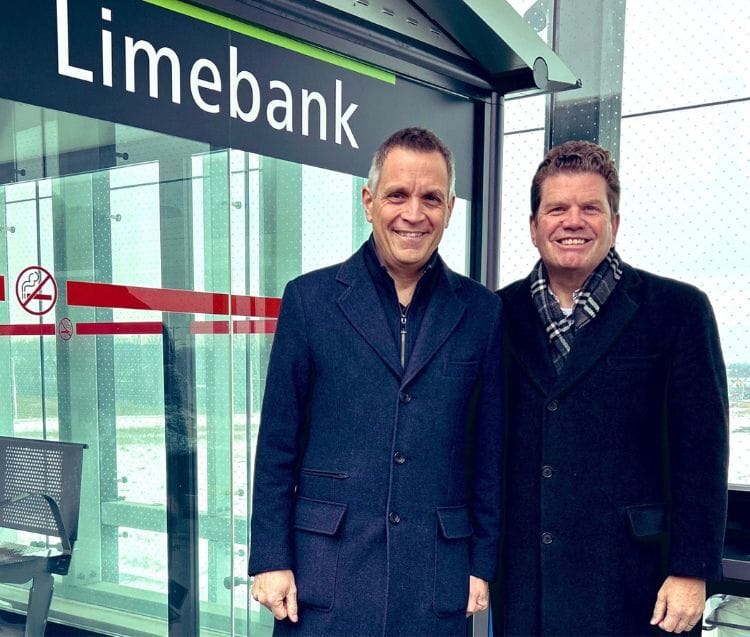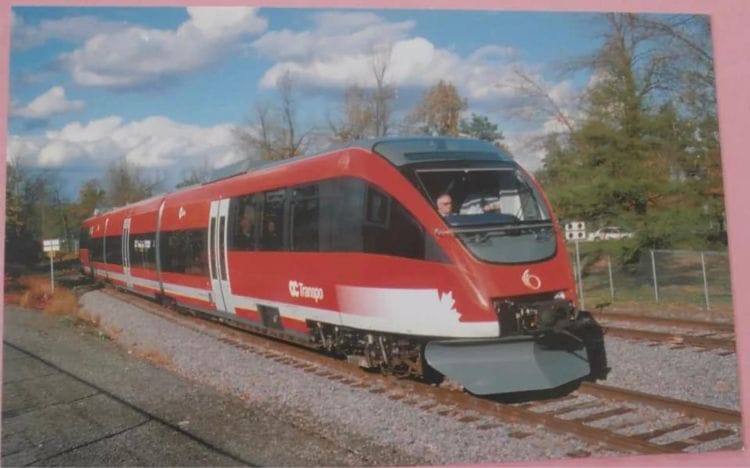Ottawa was late to the game when it opened its first rail project in 2001. The O-Train (now part of the Trillium Line) was started as a pilot project and an alternative to bus lanes. Its plans were always for expansion, but it was supposed to come long before it did.
The original vision: In 2006, city council voted 14 to 7 to replace the diesel-fueled O-train with an electric system. The proposed plans at the time would have seen the system expand past Bayview station to the University of Ottawa as part of one line. In the south-west it would have gone past South Keys to Riverside South — like it is now — but also to Barrhaven.
Timelines were to be fast. Shovels in the ground by later that year, a full system up in operation by fall 2009. The full price tag? Under $780 million (plus a proposed maintenance facility). It would have been the Capital’s largest infrastructure project since the building of the Rideau Canal, but controversies soon followed.
Derailed in an election: The year 2006 brought a municipal election to Ottawa. Incumbent Mayor Bob Chiarelli was a huge proponent of the project. Former CHEO boss Alex Munter who was a city councillor running for mayor at the time was too, but wanted to cancel the Barrhaven expansion. Chiarelli lost to Larry O’Brien, perhaps the city’s most controversial mayor, who opted to postpone the project for six months while pondering the decision.
Lawsuits followed: The project was eventually cancelled, but doing so cost the city a lot of money. The Siemens/PCL/Dufferin design team, who were awarded the contract, went after the city with two options: The first proposal was for the city to pay $175 million in compensation to Siemens in order to settle the dispute and cancel the contract. The second proposal was to re-launch the project with an additional price tag of $70 million to the cost of the original project. In the end, lawsuits against the city of Ottawa over its cancelled light rail system totalled $36.7 million.
Negative impacts: Residents in the south end of the city were not pleased. A poll conducted by the mayor's office showed most were unhappy with its cancellation, but only one-third wanted to revive the shelved plans.
It also setback key infrastructure projects for Riverside South like the Vimy Memorial Bridge which would have been built sooner but only opened in 2014.
One of the supporters of the project was current Riverside South-Findlay Creek city councillor Steve Desroches. He was sitting around the council table when the controversial decision was made.
Speaking to the Lookout, Desroches said he felt the cancellation set the city back decades. His interview has been edited for length and clarity.
Lookout: Almost 20 years after the first plans were unveiled, light rail is finally rolling into Riverside South. Do you feel the original idea would have been a more beneficial system?
Desroches: This current project is a silver medal and maybe even bronze. The original project was a good model in terms of cost and technology used. It would have meant no transfer for riders at Bayview. We would have had a much more consistent technology across the line. While the current system is very good, the Trillium line is diesel and that means a transfer.
I think we would have seen many more transit oriented lifestyles with the first plan. People would have moved into this community sooner. I hear from many people who say they wanted to move to Riverside South with only one car and rely on transit to get to work but a vehicle for evening activities. Our reputation was tarnished.

Ottawa Mayor Mark Sutcliffe with city councillor Steve Desroches. X photo.
Lookout: For Riverside South at least, the system that was built follows most of the original plans. How do you think it will better transit in the community which is far from the core of the city?
Desroches: The current bus network is tired and strained, increasingly unreliable because it relies on the road network. We see one of the few parts of the city that doesn’t have a rapid transit network. When you think of Barrhaven, Kanata, or Orleans, there is a dedicated transit system that’s not located by the road network. All our buses run along the road network like Limebank, Albion, and Leitrim. That’s going to be increasingly unreliable as it’s delayed because of traffic, congestion, and traffic lights going out.
Lookout: For those who don’t live in or near Riverside South, they might be asking why build out to an area that’s currently surrounded by empty fields. How will this community change over the next decade or so?
Desroches: You will see a mix of residential and retail space. It will include a public library — the first in the city near an LRT line — additional sports fields and parks. You will see the first high rises going into Riverside South concentrated around the rail lines.
These plans will come to fruition over the next few years. Who can blame developers that they’d wait until there was tangible progress getting the trains here? The city needs to be proactive and put infrastructure in neighbourhoods before their growth.
Lookout: Are there any parts to the current light rail plan you don’t think people are aware of?
Desroches: One of the lesser-known projects that are part of the Trillium Line is the multi-use pathway that will run parallel from Bowesville to Greenboro. This is a big benefit to the recreational infrastructure for the south east part of the city. You can go from Riverside South through the Greenbelt into the Greenboro community and the networks that exist there. It’s not going to be winter maintained. It’s more recreational-oriented then any other purpose.




